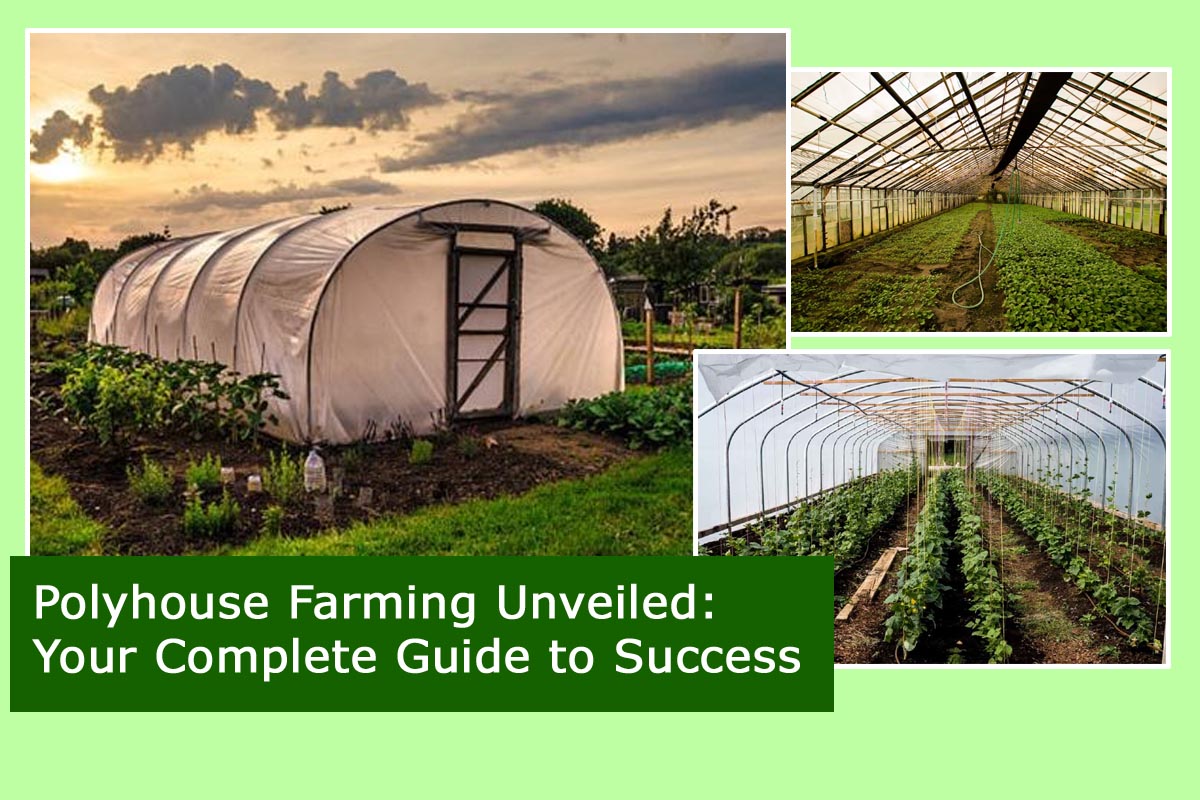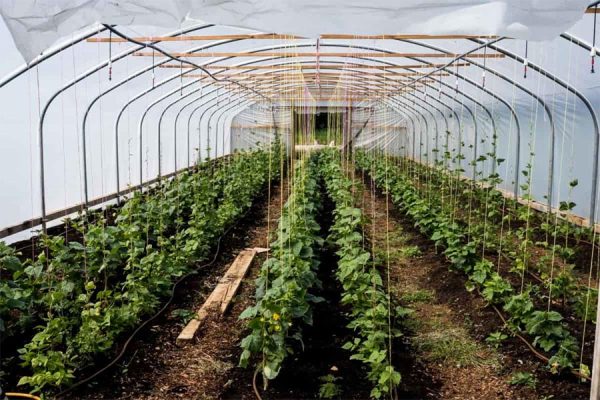
Polyhouse Farming Unveiled: Your Complete Guide to Success
In recent years, the agricultural landscape has witnessed a remarkable transformation with the advent of polyhouse farming. This innovative approach to cultivation has revolutionized the way we grow crops, enabling farmers to overcome various challenges and maximize yields even in adverse conditions. If you’re intrigued by the idea of polyhouse farming and eager to embark on this journey, you’ve come to the right place. In this comprehensive guide, we’ll delve into the intricacies of polyhouse farming, exploring everything from its benefits and components to essential tips for success.
Understanding Polyhouse Farming
Polyhouse farming, also known as greenhouse farming or protected cultivation, involves growing crops within a controlled environment under a structure covered with polyethylene or other translucent materials. Unlike traditional open-field farming, polyhouse farming allows farmers to regulate factors such as temperature, humidity, and light intensity, thereby optimizing growing conditions and enhancing crop productivity.

Also Read This : Bright Sunshine and Less Care: 7 Must-Have Summer Flowering Plants for Your Garden!
Components of a Polyhouse
A typical polyhouse comprises several key components, each playing a crucial role in creating an ideal growing environment for plants:
Structure:
The framework of the polyhouse provides support and stability to the entire structure. It can be made of materials like metal, wood, or PVC pipes, depending on factors such as cost, durability, and environmental conditions.
Covering Material:
The covering material, usually polyethylene film, serves as a barrier that traps heat and maintains the desired temperature inside the polyhouse. It also allows sunlight to penetrate while protecting plants from harsh weather elements.
Ventilation System:
Adequate ventilation is essential for regulating temperature and humidity levels within the polyhouse. Ventilation systems, including exhaust fans, side vents, and roof vents, facilitate airflow and prevent the buildup of excess heat and moisture.
Also Read This : Step-by-Step Guide to Growing Plump Strawberries at Home
Shading System:
To prevent excessive sunlight exposure, especially during hot summer months, polyhouses may incorporate shading systems such as shade nets or retractable curtains. These help to diffuse sunlight and reduce the risk of heat stress on plants.
Irrigation System:
Efficient irrigation is critical for supplying water and nutrients to crops grown in polyhouses. Drip irrigation systems, hydroponics, or fogging systems are commonly used to ensure uniform water distribution and promote healthy plant growth.
Environmental Controls:
Advanced polyhouses may be equipped with automated environmental control systems that monitor and adjust factors like temperature, humidity, and carbon dioxide levels. These systems enable precise management of growing conditions and optimize crop growth.
Also Read This : Green Balcony Bliss: Elevate Your Space with These Simple Tips for Plant Care
Benefits of Polyhouse Farming
Polyhouse farming offers a myriad of advantages over traditional farming methods, making it an attractive option for growers around the world:
Year-round Cultivation:
By providing a controlled environment, polyhouses enable year-round cultivation regardless of seasonal changes or adverse weather conditions. This ensures a steady and consistent supply of fresh produce throughout the year.
Increased Crop Yield:
Optimal growing conditions within polyhouses result in higher crop yields compared to open-field farming. By regulating factors like temperature, humidity, and light, farmers can maximize the productivity of their crops and achieve better quality harvests.
Also Read This : Beat the Heat: The Crucial Role of Mulching in Summer Gardening
Water Efficiency:
The efficient use of water is a significant benefit of polyhouse farming, as irrigation systems can be tailored to deliver precise amounts of water directly to plant roots. This minimizes water wastage and helps conserve this precious resource.
Pest and Disease Control:
Polyhouses provide a protective barrier against pests, insects, and diseases, reducing the need for chemical pesticides and herbicides. This promotes healthier plants and minimizes the risk of crop damage or loss.
Space Optimization:
Polyhouse farming allows for efficient utilization of space, making it suitable for urban and peri-urban areas where land availability is limited. Vertical farming techniques can further maximize space utilization, enabling growers to produce more in less area.
Also Read This : Transforming Waste into Garden Gold: Top 7 Kitchen Scraps for Thriving Gardens
Tips for Success in Polyhouse Farming
While polyhouse farming offers numerous benefits, achieving success requires careful planning, proper management, and adherence to best practices. Here are some tips to help you maximize your yields and profitability:
Choose the Right Location:
Select a site with adequate sunlight exposure, good drainage, and easy access to water and utilities. Consider factors like climate, soil quality, and proximity to markets when choosing the location for your polyhouse.
Invest in Quality Infrastructure:
Opt for durable materials and components when building your polyhouse to ensure structural integrity and longevity. Invest in a reliable irrigation system, ventilation equipment, and environmental controls to maintain optimal growing conditions.
Also Read This : Discovering the Best Plants for Vertical Gardening
Select Suitable Crops:
Identify crops that are well-suited to polyhouse cultivation and have high market demand. Consider factors such as climate suitability, crop rotation, and profitability when choosing which crops to grow.
Implement Good Agricultural Practices:
Follow recommended agronomic practices for soil preparation, planting, irrigation, fertilization, and pest management. Monitor plant health regularly and take timely action to address any issues or abnormalities.
Stay Updated on Technology and Innovations:
Keep abreast of the latest advancements in polyhouse farming technology, techniques, and crop varieties. Embrace innovation and experimentation to continually improve your farm’s productivity and sustainability.
Market Your Produce Effectively:
Develop a marketing strategy to promote your produce and reach potential buyers. Explore direct-to-consumer channels such as farmers’ markets, community-supported agriculture (CSA) programs, and online platforms to sell your fresh produce directly to consumers.
Also Read This : Double Your Balcony Garden Growth with These Expert Hacks
Polyhouse farming represents a paradigm shift in agricultural practices, offering growers the opportunity to overcome traditional constraints and achieve sustainable, year-round crop production. By harnessing the power of controlled environments, advanced technology, and efficient management practices, farmers can unlock the full potential of polyhouse farming and embark on a journey towards greater productivity, profitability, and environmental sustainability. Whether you’re a seasoned farmer looking to diversify your operations or a novice entrepreneur venturing into agriculture for the first time, polyhouse farming holds promise as a viable and rewarding pursuit. With careful planning, dedication, and a commitment to excellence, you can set yourself on the path to success in this exciting field of agriculture.




